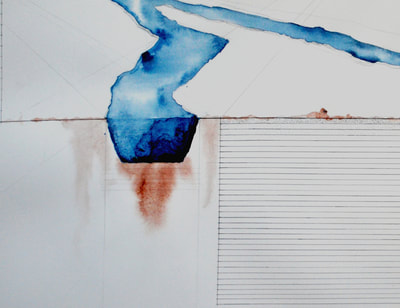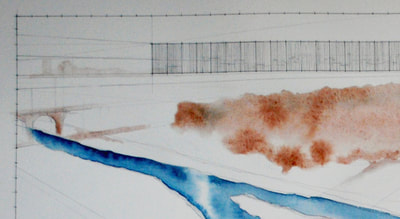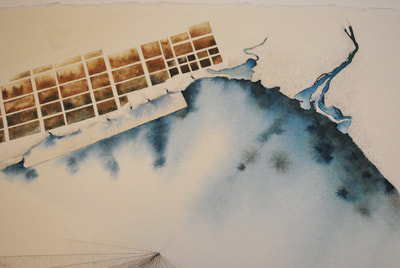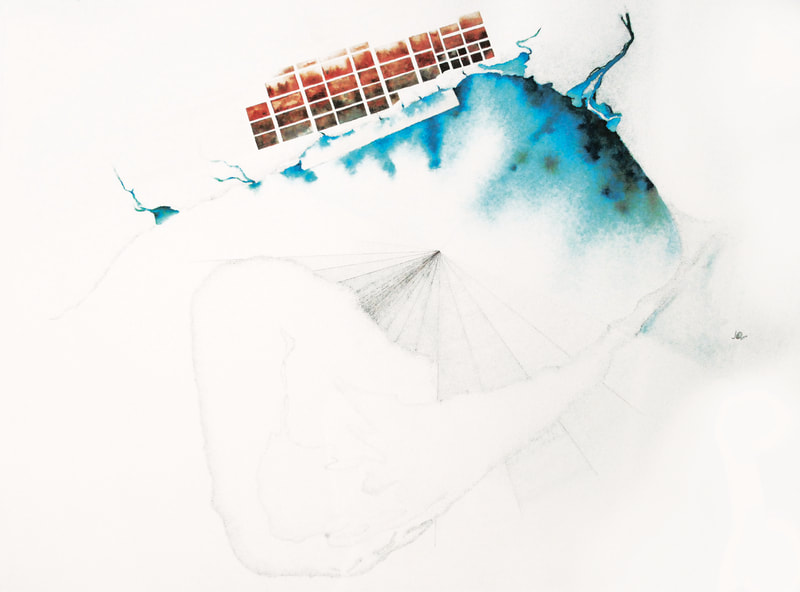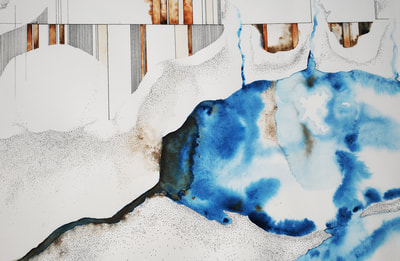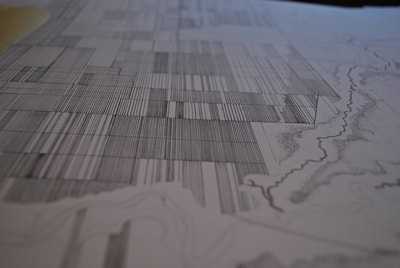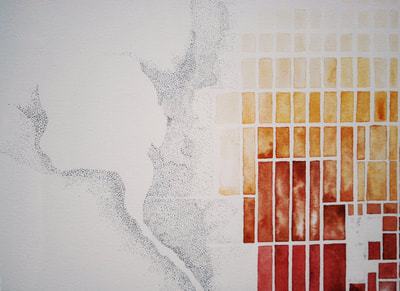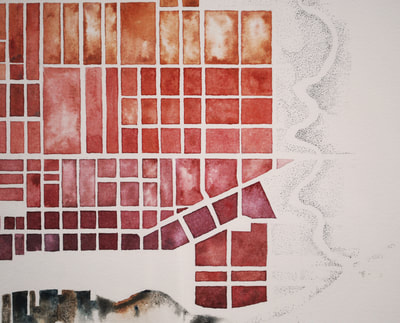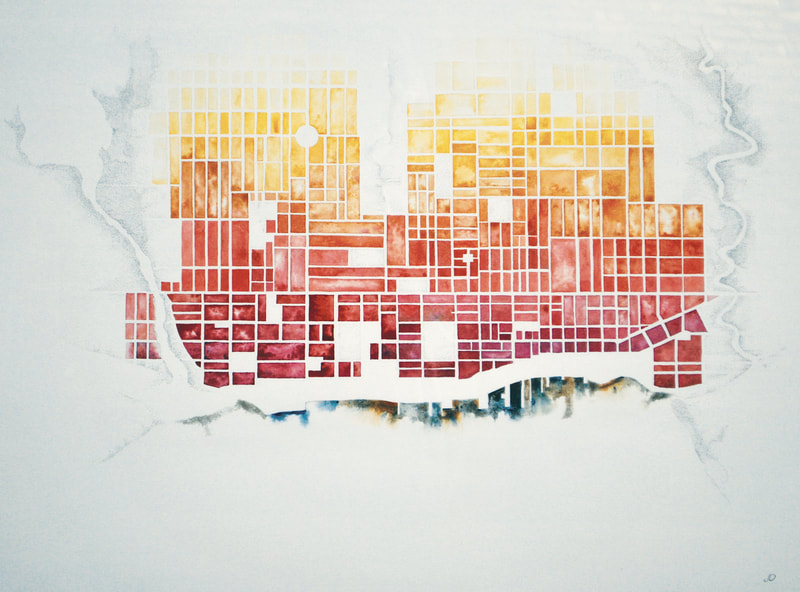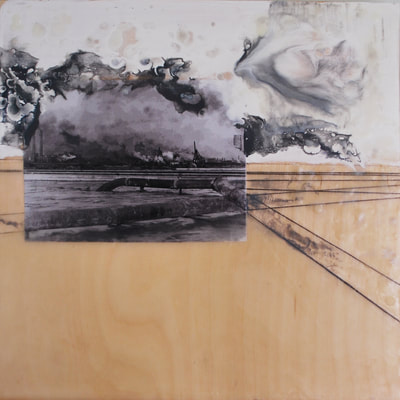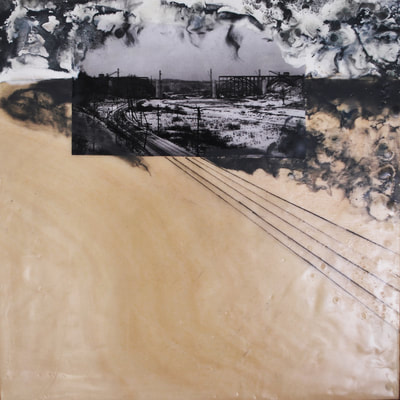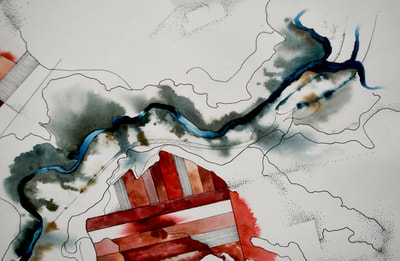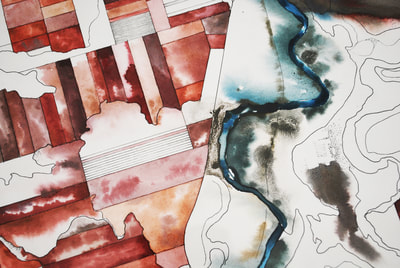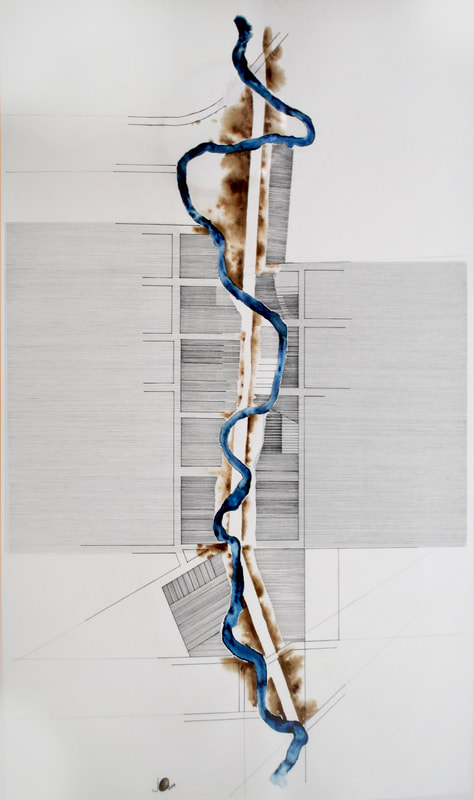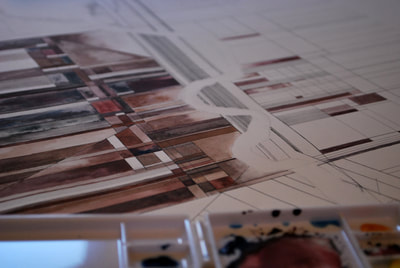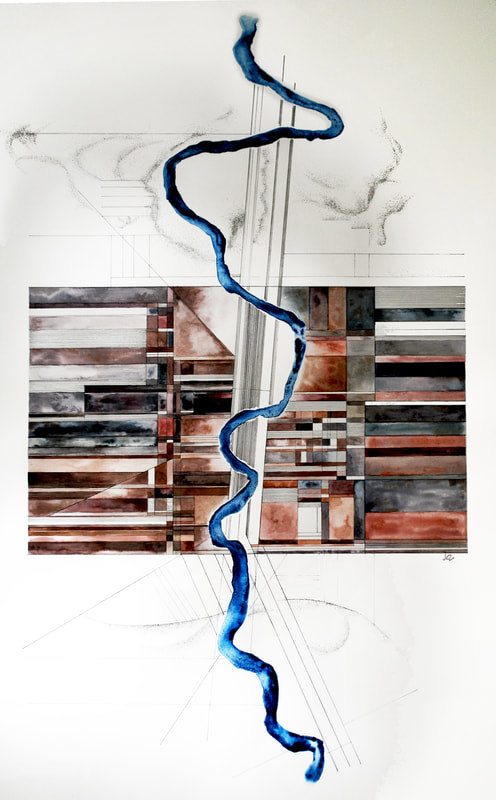don river + toronto
My recent work has been a search to discover how we have created our cities and changed our landscapes. I have lived, studied, and practiced architecture in various large cities, where the dependence on rivers directly influenced how our built forms have developed. I see myself as a hybrid mix of artist and architect; one who tries to relate the minutiae of the built world —traces, material and layers—to the abstract dimensions of the earth's self-motivated methods. Using mostly drafting and watercolour techniques, using clay and sand, I am finding ways of collaborating with the actual water, clay, sand and traces of a particular moment in time.
I like to think that the works on paper on which I assemble these different drawing methods represent a kind of inventory or document about the state of our cities. I want to reveal both the energy and beauty of it, as well as show its condition of critical, even terminal, changes. My interest is to paint the processes and historical growth of the living city—touched by storms, innovations, movement of water or the way in which the city changed direction. I have recently been concentrating on the Don River of Toronto which has been threatened by centuries of industrial abuse and is soon to be rejuvenated at its mouth. In these paintings, after considering historical mapping projects of the 18th, 19th and 20th centuries, various perspectives are demonstrated, where colour, texture and scale play in abstract deposits. Graphic scales and directions have been intentionally omitted to create a disconnect with the architectural representation limitations.
Inspired by 18th, 19th and 20th century maps and archived accounts of Toronto, my latest pieces turn to Toronto`s Don River history.
`Never before in the history of Toronto, `began the coverage for the flood of 10-13 September 1878, `has the Don presented such an appearance as it did yesterday, and at no previous time have its waters occasioned so much damage.` At the height of the flood, waters on the Don rose to a record of eight feet above normal levels. The Globe described the scene as `wild and picturesque in the extreme`: `hundreds of trees floated down the stream, the leafy tops above the water. Many of them anchored in the mud at various points throughout the wide expanse of waters, thus forming what looked like a miniature archipelago.` Four of the six bridges spanning the Lower Don were destroyed...
Reclaiming the Don: An Environmental History of Toronto's Don River Valley, Jennifer L. Bonnell.
`Never before in the history of Toronto, `began the coverage for the flood of 10-13 September 1878, `has the Don presented such an appearance as it did yesterday, and at no previous time have its waters occasioned so much damage.` At the height of the flood, waters on the Don rose to a record of eight feet above normal levels. The Globe described the scene as `wild and picturesque in the extreme`: `hundreds of trees floated down the stream, the leafy tops above the water. Many of them anchored in the mud at various points throughout the wide expanse of waters, thus forming what looked like a miniature archipelago.` Four of the six bridges spanning the Lower Don were destroyed...
Reclaiming the Don: An Environmental History of Toronto's Don River Valley, Jennifer L. Bonnell.
